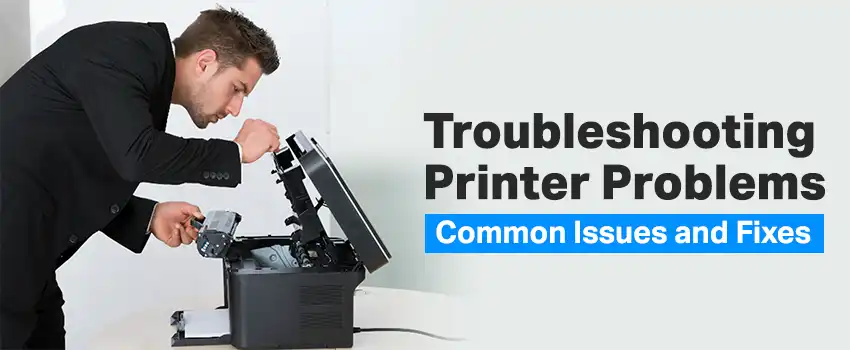
Printers are essential tools in both home and office settings, but they can sometimes be a source of frustration when they malfunction. Here are ten common printer problems and their solutions, presented in a single paragraph for each issue.
Paper jams are a frequent issue that can disrupt your printing tasks. To resolve this, first turn off the printer to avoid any potential damage. Open the printer’s access panels to locate the jammed paper, and gently pull it out, ensuring not to tear it. If the paper does tear, remove all fragments to prevent future jams. Check the paper path for any obstructions and ensure the paper is properly aligned in the tray. Using the correct paper type and size recommended by the manufacturer can also help prevent jams.
When your printer doesn’t respond to print commands, it can be due to connectivity issues or outdated drivers. Start by checking all connections, including USB cables, Ethernet cables, or Wi-Fi connections. Restart both your printer and computer to reset any temporary glitches. Visit the printer manufacturer’s website to download and install the latest drivers. Additionally, ensure your printer is set as the default printer in your computer’s settings to avoid communication issues.
Poor print quality, such as faded prints, streaks, or incorrect colors, can be frustrating. Begin by checking the ink or toner levels and replace or refill cartridges as needed. Use the printer’s built-in cleaning function or manually clean the print heads to clear any clogs. Ensure that the print settings match the type of paper you’re using and select the appropriate print quality. Misaligned print heads can cause blurry prints, so use the printer’s alignment tool to correct this issue.
If your printer shows as “offline,” it may not be able to receive print jobs. Ensure the printer is turned on and connected to the same network as your computer. Restart the Print Spooler service on Windows by going to Services, finding the Print Spooler service, and restarting it. Remove the printer from your computer’s list of devices and reinstall it. Updating the printer’s firmware can also help resolve connectivity issues.
Slow printing can be a major inconvenience, especially when you need to print large documents quickly. To speed up printing, reduce the print quality by selecting “Draft” mode for documents that don’t require high quality. Adding more RAM to your printer, if supported, can also improve printing speed. Consider using a wired connection (USB or Ethernet) instead of a wireless connection for faster and more reliable performance. Printing large documents in smaller batches can also help avoid overloading the printer.
Wireless printers sometimes have trouble connecting to Wi-Fi networks. Ensure the printer is within range of the Wi-Fi router and that the signal is strong. Double-check that the Wi-Fi network name (SSID) and password are entered correctly. Restart both the Wi-Fi router and the printer to reset the connection. Keeping the printer’s firmware up-to-date can also help resolve connectivity issues, so check for firmware updates and install them if available.
Double-sided (duplex) printing can sometimes result in misaligned or upside-down pages. Ensure that the duplex printing option is enabled in the printer settings and verify that the page orientation settings are correct. If automatic duplex printing is not working, try manually printing on both sides by reinserting the paper. This can be done by printing the odd-numbered pages first, then reinserting the paper to print the even-numbered pages on the other side.
Printer drivers are essential for communication between your computer and printer, and corrupted or outdated drivers can cause various issues. Visit the printer manufacturer’s website to download and install the latest drivers for your printer model. If updating doesn’t work, uninstall the current drivers and reinstall them. If specific drivers are unavailable, try using generic printer drivers provided by your operating system.
Print jobs getting stuck in the queue can prevent new jobs from being processed. Open the print queue on your computer and cancel all pending jobs. Restart the Print Spooler service on Windows by going to Services, finding the Print Spooler service, and restarting it. Reboot both the printer and the computer to clear any temporary issues. This should help clear the queue and allow new print jobs to be processed.
Unusual noises from the printer can indicate mechanical issues or obstructions. Check the paper path and internal components for any foreign objects or debris. If the printer’s manual allows, apply a small amount of lubricant to moving parts to reduce friction. If the noise persists, contact the printer manufacturer’s support for further assistance. Regular maintenance and proper handling can help prevent such issues.
By understanding these common printer problems and their solutions, you can keep your printer running smoothly and minimize disruptions to your workflow. Regular maintenance, keeping software up-to-date, and using genuine parts can also help prevent issues from arising in the first place. If you encounter persistent problems that you can’t resolve on your own, don’t hesitate to contact the printer manufacturer’s support or a professional technician for assistance. For expert help, consider reaching out to the Star Tech Service Center in Bangladesh for reliable printer repair services. Happy printing!